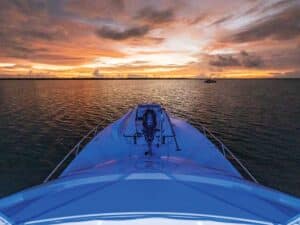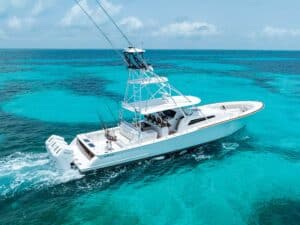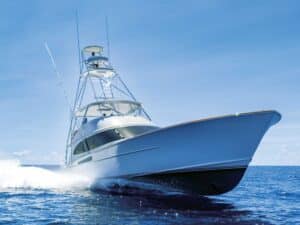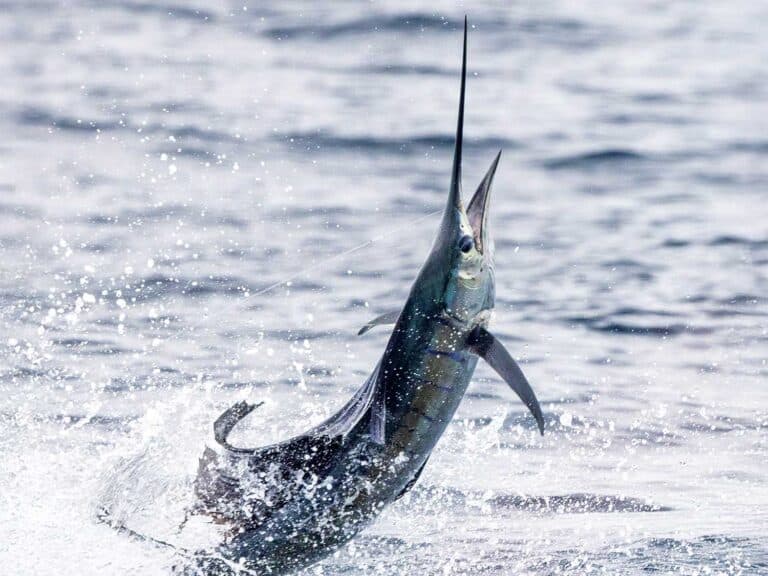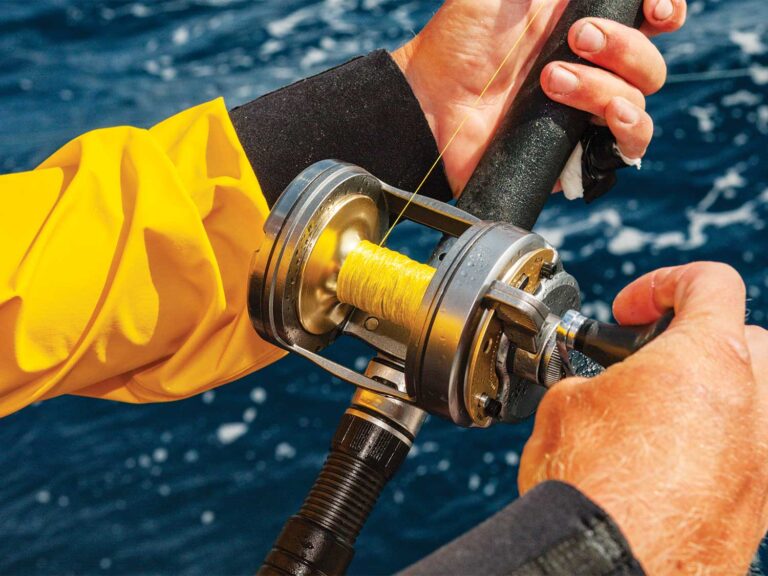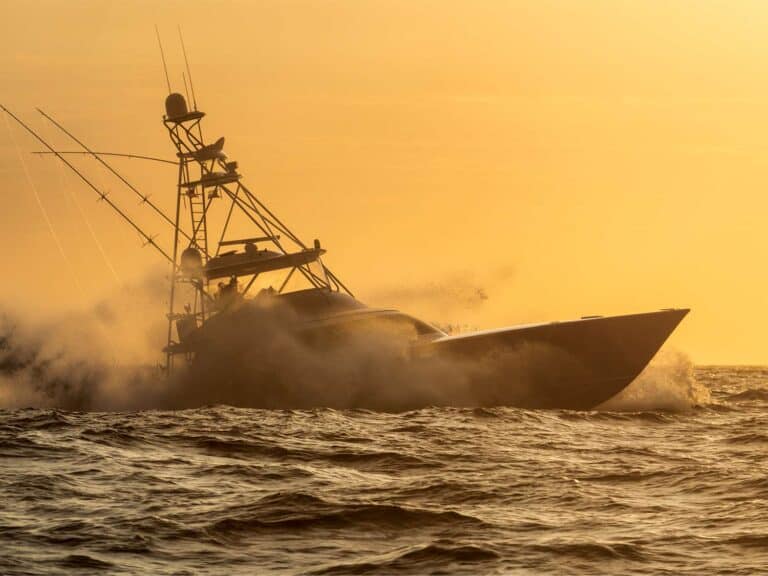So you’ve done all your tackle preparation and put yourself in position to get the bite, but before you can get to the critical stages of the endgame, you need to be practical and intelligent about how you run the boat while hooked up, especially when you’re hooked to a really big fish. In order to maneuver your boat properly, you first need to know how your boat feels, and how it will react when you turn the wheel, go from forward to reverse and spin it around.
Use the Rudders
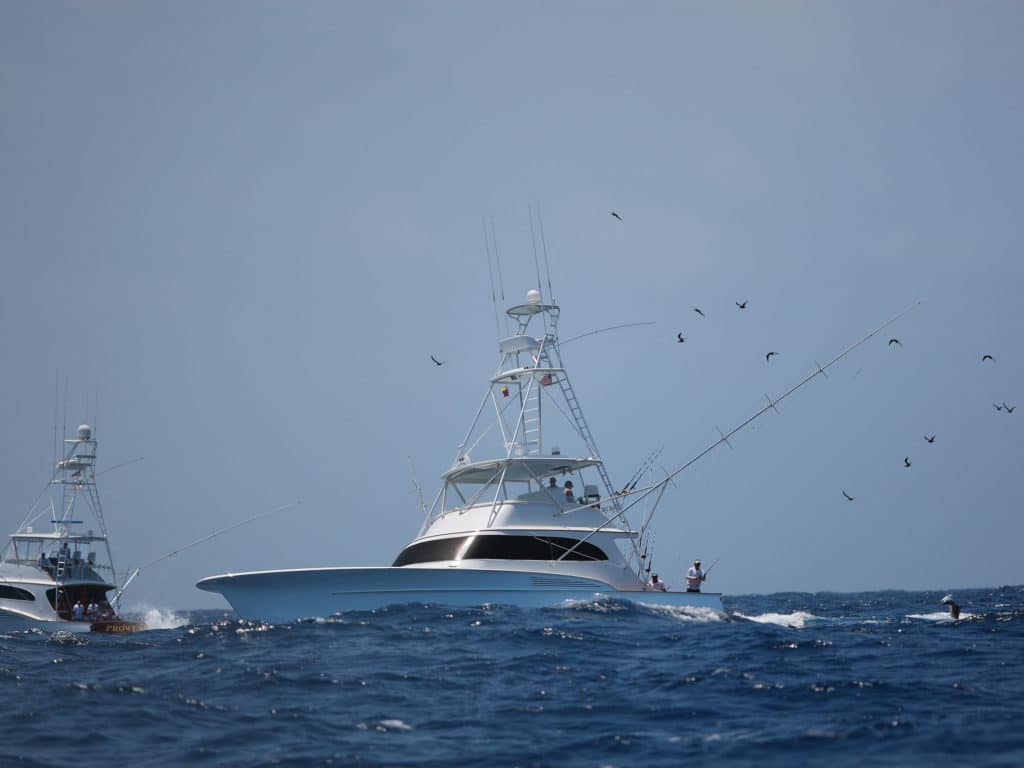
Most people, including many professionals, do not use the wheel when backing up, and prefer to use throttle to power through the situation, a hopelessly inexperienced technique that is all wrong. This practice displays the operator’s lack of competence, experience and understanding of how the boat reacts. It will spin around much more quickly and easily by using the steering wheel. It’s there for a reason, and it is just as important when turning in reverse as it is when moving forward.
To better understand how your boat will react when you need it to on a big fish, you must practice spinning the boat, backing up and making the boat turn in forward. Try a few basic maneuvering exercises such as backing up while turning the wheel and making the boat turn, then moving the wheel the other way to make it turn back. Pretend you are backing through a slalom course, adding power as you become more adept at predicting what the boat will do and how it feels as you make adjustments.
This will help your dockside handling incredibly, and make you a better driver in general. Practice going forward with the wheel hard over and applying throttle in short bursts to make the transom move without making the bow turn in a sweeping arc. Knowing how your boat turns at varying angles and how it changes when throttle is added will help you greatly when you get a big fish near the boat.
Top of the Heap
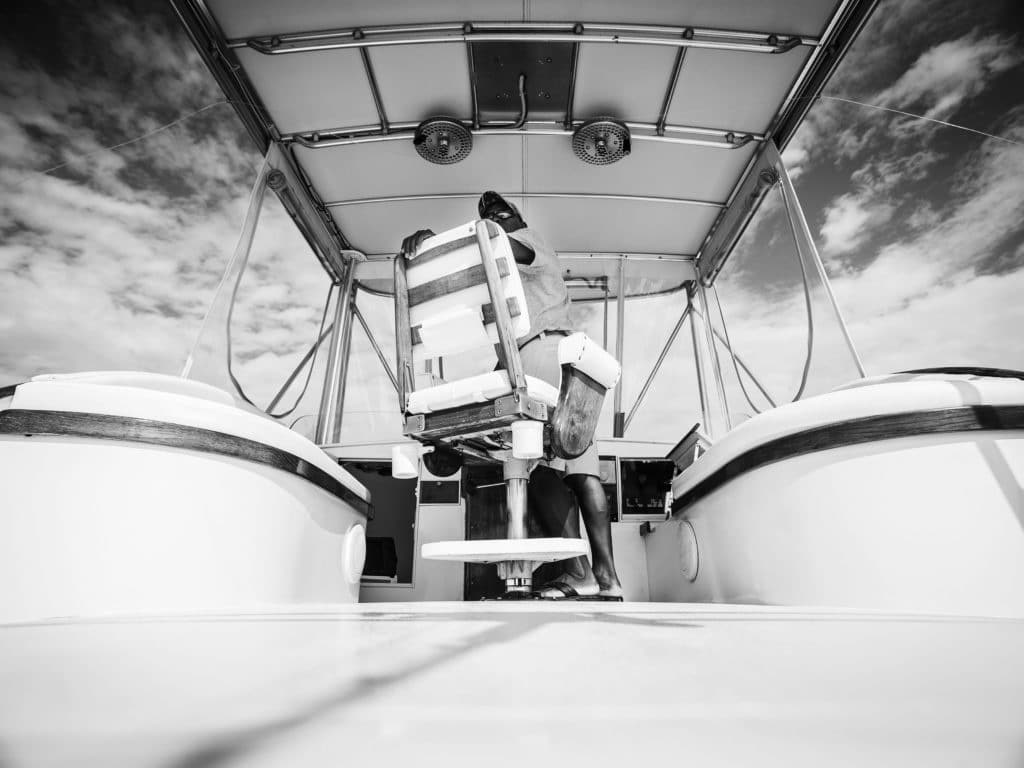
Top of the Heap
The captain must have an unobstructed view during all phases of the battle. Good driving will shorten the fight and help ensure success.
Let the Boat Help You
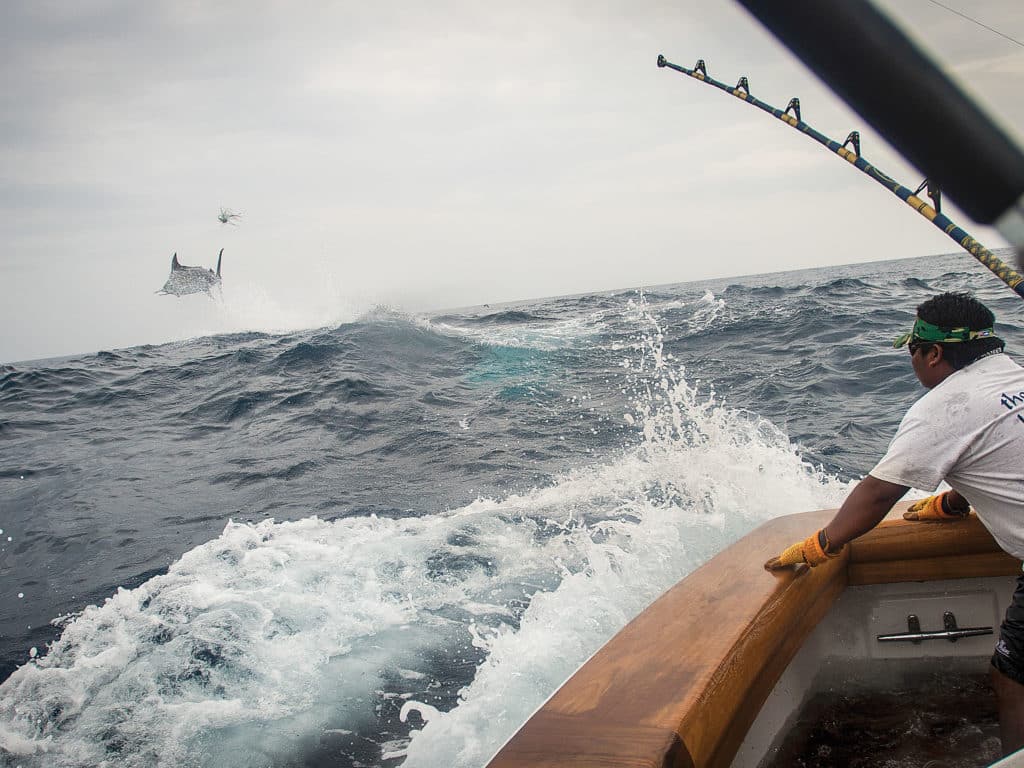
It’s easier to control a hot fish by chasing it in forward gear. Only spin and back on a fish when it’s close.
I have been fortunate to have fished with some of the best skippers in the world for large blue marlin and giant tuna. These guys understand the geometry of angles and how it applies to fishing, such as line belly, water pressure on the line and drag, and the critical moments of having a large fish close to the boat. Their overall success is directly tied to the fact that they are also natural boatmen. A good boatman is someone who understands how the boat feels, how to move on a boat and how to make the boat do things that it wasn’t necessarily designed or intended to do, especially when a large fish is attached to the other end of the line. The skippers also understand that the boat can help or hurt a wire man when he takes the leader and initiates the endgame sequence of taking or tagging a fish.
Tag or Shoot
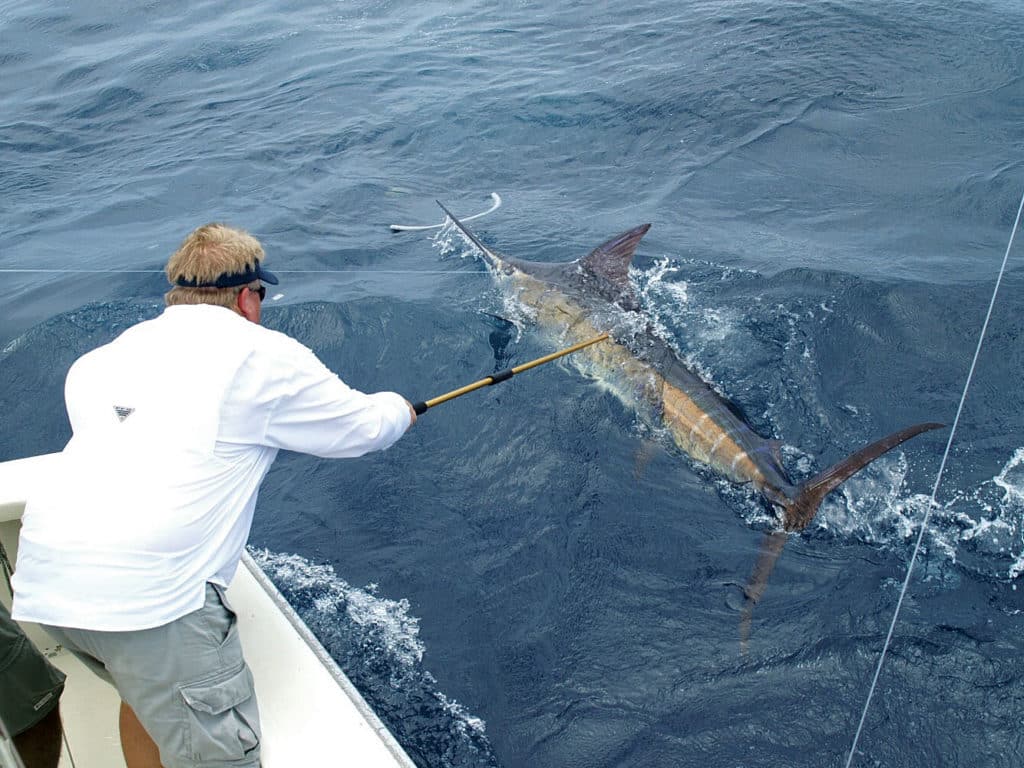
Knowing how your boat reacts in all circumstances lets you better control the outcome of a bite, whether you want to bill a fish for a photo or tag it during the endgame.
Get Your Tackle Ready
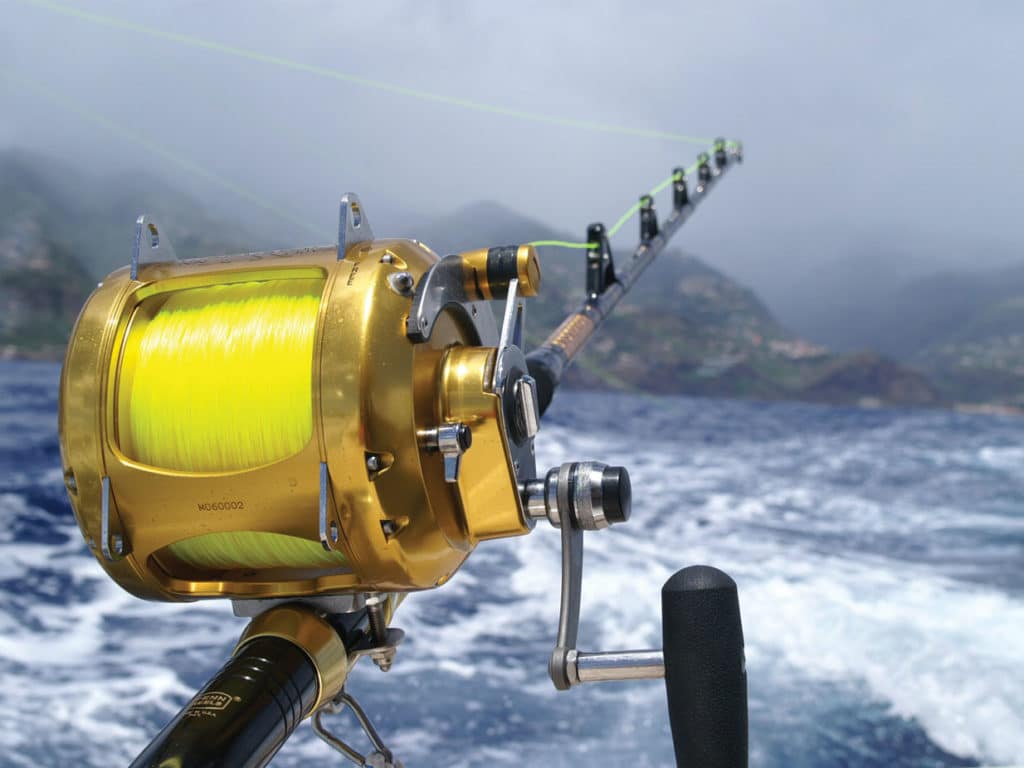
Most anglers focus on getting their tackle ready for a fight with a big fish, but it’s equally important to know what to do with the boat.
Stay Up-Sea
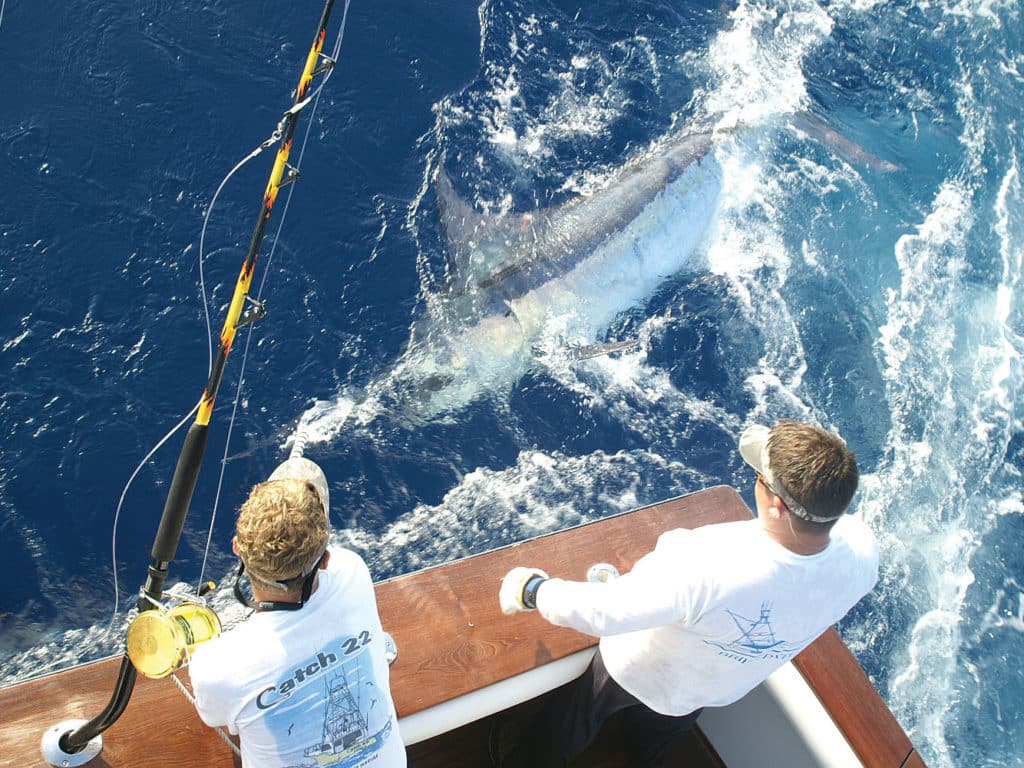
Always try to maintain an up-sea position because if you are down-sea of the fish, you are fighting the wind and the sea, adding time to the fight and increasing your potential for losing it. Getting the boat in position up-sea will put both of those factors in your favor. If possible, also try to use the sun to your advantage so you can see the line, the fish and its movements as things get close. This approach applies to everything from kingfish to blue marlin; it is just easier on everything — tackle, boat, angler and fish.
Often times you will see a boat on a fish get into a pattern of back and forth, with forward and reverse moves as the fish gets closer, losing and gaining line in a cyclical fashion. The fish is doing what we call “pinwheeling,” a typical behavior with tuna. The fish circles with its body turned sideways in the water column and the angler’s line straight up and down. Imagine an upside-down cone, with the boat at the pinnacle on the surface, which is the tip of the rod, and the fish swimming the diameter of the cone in the water column. To get out of this, try to position yourself above the fish, determine in which direction the fish is pinwheeling and spin the boat in the same direction, applying drag and pulling the fish up.
As a fish gets close to the boat and the wire man is getting ready to grab the leader for the tag or gaff, keep the boat moving at a rate of speed similar to the fish. Two bad things happen immediately if you stop the boat. First, the fish is still swimming while the boat comes to a stop and goes adrift at the mercy of the wind and seas, so now the fish is uncontrollable, either swimming under the boat or lying where it cannot be led alongside and controlled. Second, leaving the wheel is asking for trouble. It puts the wire man in a dangerous position. There is no accounting for the unpredictability of a fish; this warrants the captain to stay on the wheel through the end, if possible. Being able to make small or swift adjustments while the fish is boat-side can help your crew make a clean release or capture.
By keeping the boat moving a bit, you are able to keep the fish’s head in the water, which helps to control it somewhat. Once the head begins to be lifted out of the water, the fish will react, making it hard to get a good tag or, especially, a good gaff shot; you always want to gaff toward the head of the fish so you gain immediate control of it. You must also remember that every fish is a bit different; although there are similarities, each fish will do its own thing.
Turn Down-Sea at the End
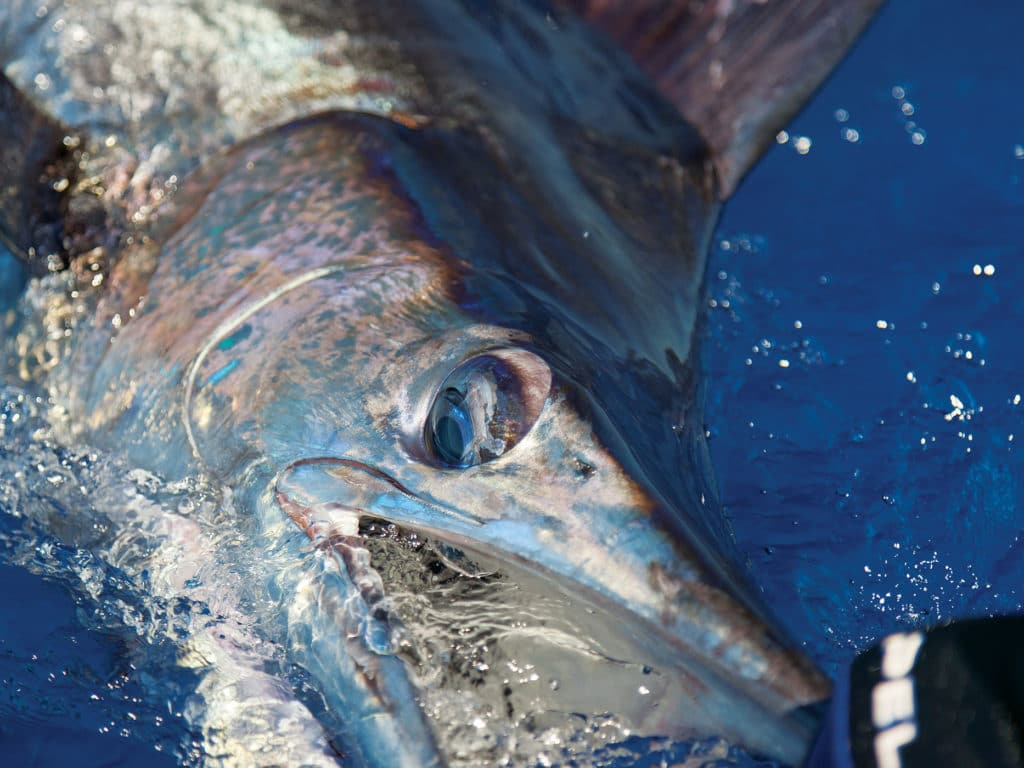
Take your time, and keep your eyes on the fish. When at the point where the fish is coming near the boat, turn the boat down-sea so it’s not reacting to the sea but gently lolling with the waves, making it easier to either tag or gaff the fish in clean water. Using quality wind-on leaders also helps because in many cases you can eliminate the leader man and simply wind the fish within tag or gaff shot.
Getting to know how your boat feels and how it will react when you ask it to do things will help you incredibly, not only at the dock but also when that big fish comes piling in. Using the boat to help you gain position and gain line on the fish will help reduce fish losses due to long fights, and will help you release the fish quickly with less chance of damage and greater chance of survival.
Gaining position and keeping the boat in the right place during the endgame sequence will also help you do what you need, without the additional stress and strain of being in the wrong position at the right time and missing your chance, breaking tackle, damaging the boat or worse — putting someone in danger.

